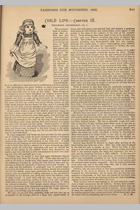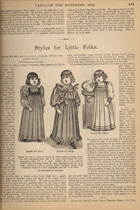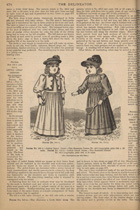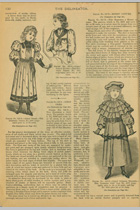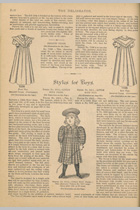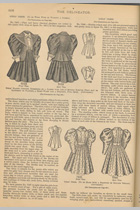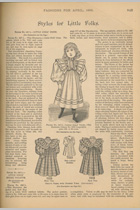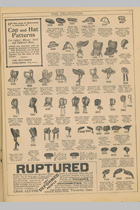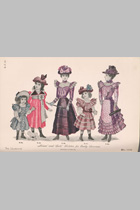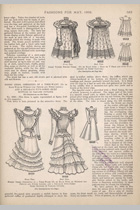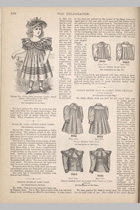Catalogues

The Delineator:
Journal of fashion, culture and fine arts, launched in 1876 by the Butterick Pattern Company ...
Images from the Library
and Archives
Dressing Dolls
The McKendry Collection of doll clothing shows that dolls were dressed in many layers of garments, similar to those worn by ladies and girls during this period. The dolls were typically equipped with an extensive trousseau that could include outer garments, petticoats, drawers, corsets and accessories such as shoes, parasols, hats and jewellery. Shorter hems and the presence of a bonnet indicated that the doll was representing a little girl; longer, fuller dresses characterized dolls representing ladies.
With their miniature size, dolls were often used as an affordable way to display stylish fashions and fabrics. Nineteenth-century textiles used for dolls ranged from plain cotton to striped patterns and vibrantly coloured silks. These fabrics are evidence of what was available and fashionable at the time, because they were often made of scraps from actual garments. Little girls were taught valuable lessons in how to sew and dress appropriately by making doll clothes. For instance, this pair of delicately hand-sewn drawers, to be worn under a doll’s petticoat, was probably made in Ontario around 1860.


